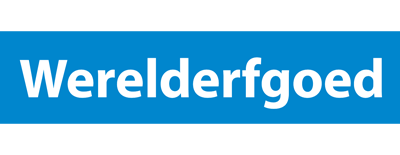Cycle route World Heritage | Schokland




Urk, Schokland, Emmeloord
The Noordoostpolder was reclaimed in the 1940s to create more land in the Netherlands. This piece of the Zuiderzee contained two islands before the reclamation, both of which you will discover with this cycle route.
Schokland is one of these former islands, although... Today, you can still clearly see the contours of the island in the landscape, making it still a kind of island on dry land. The soil is rich in archaeological treasures that indicate that people lived here centuries ago. Traces of human habitation from prehistoric times have been found. Indeed, it is known that people lived on Schokland even before the Zuiderzee came into existence. Its great archaeological value has made it a UNESCO World Heritage Site since 1995.
Despite having the longest resident history, Schokland was evacuated in 1859. As a vulnerable island in the Zuiderzee, it was dangerous to live there. The sea was knocking away pieces of land and there was a constant danger of flooding. Finally, there was great poverty. At the government's expense, some 635 Schokkers were moved, with pain in their hearts, to the mainland, mainly to Kampen. Knowing that not a metre of land was washed away from the island after that makes it an extra wry measure for the Schokker people.
The cycle tour leads you along the contours of the island, introducing you to every corner of Schokland. Also be sure to visit Museum Schokland, which is open all year round.
Urk, too, is a former island in the Zuiderzee, surrounded by agricultural landscape due to reclamation. Now it lies on the IJsselmeer. It is a traditional fishing village with a long history of fishing. The inhabitants are particularly loyal to their traditions and customs and most Urkers speak their dialect. The island feeling is still very much alive here, as you are not in Urk, but on Urk! Cycle along the Zeedijk and get off for a stroll through the cosy centre.
Did you know that Urk also has a folk legend related to Schokland? Urk's population growth had everything to do with the 'Ommelebommelestien'. This stone lies 30 metres away in the IJsselmeer. The stork comes to the stone from Egypt to lay babies in it. Fathers first had to row to Schokland with the midwife to collect the key to the stone. Then they had to row back again to collect the baby. The key has to be used to open a door near the stone. This is still not easy, as the door is underwater and so cannot be found right away. Once you found door, one Dutch guilder had to be paid for a girl and two for a boy. So when you are asked in Urk if you have been to Schokland yet, they actually ask if you have children.
Here you can expand your route with pitstops




No pitstops added yet
Congratulations on your cycling route!











